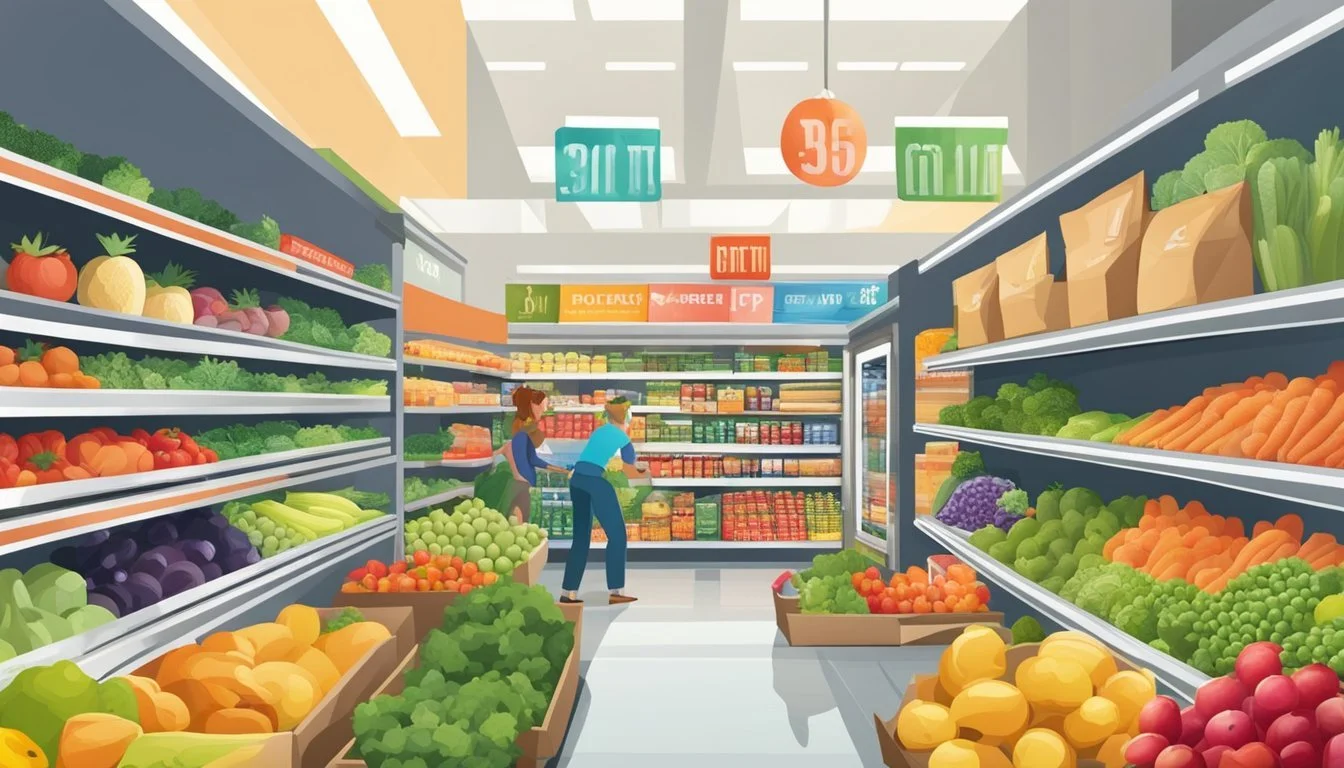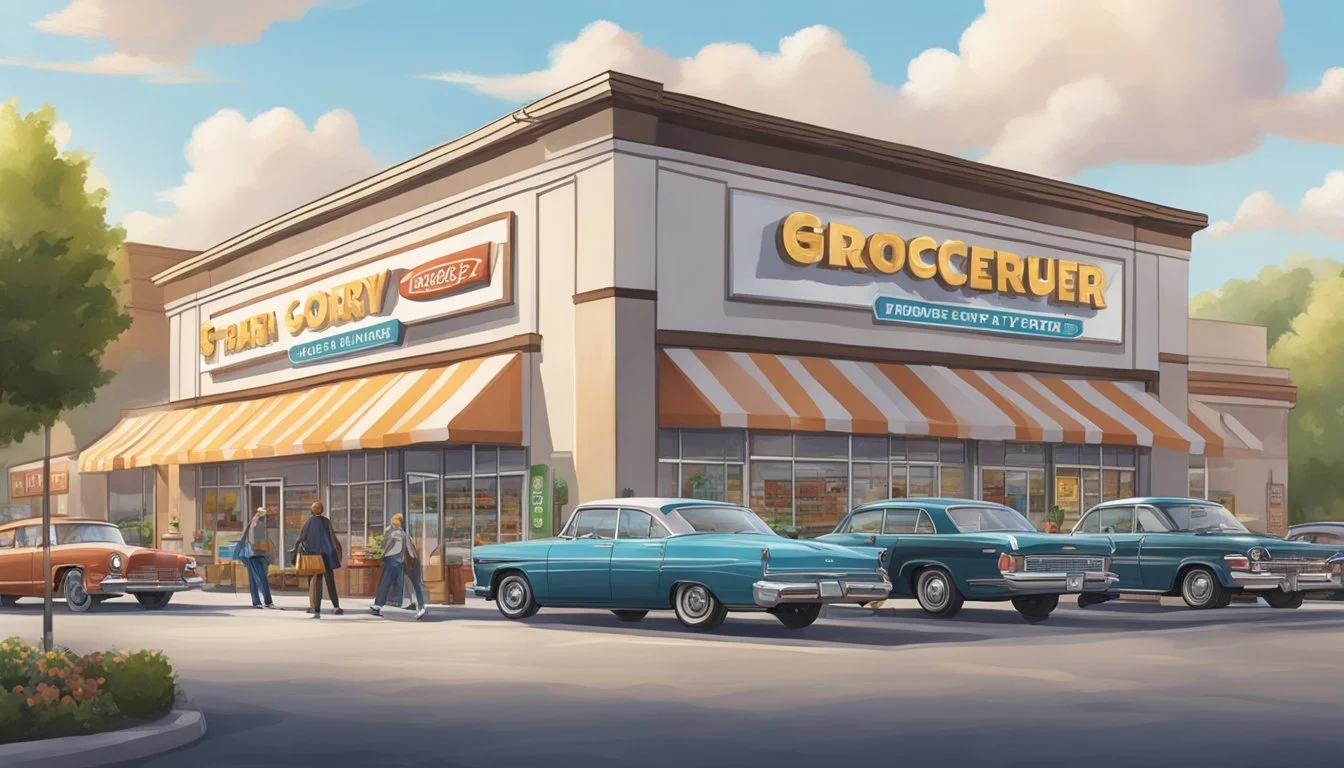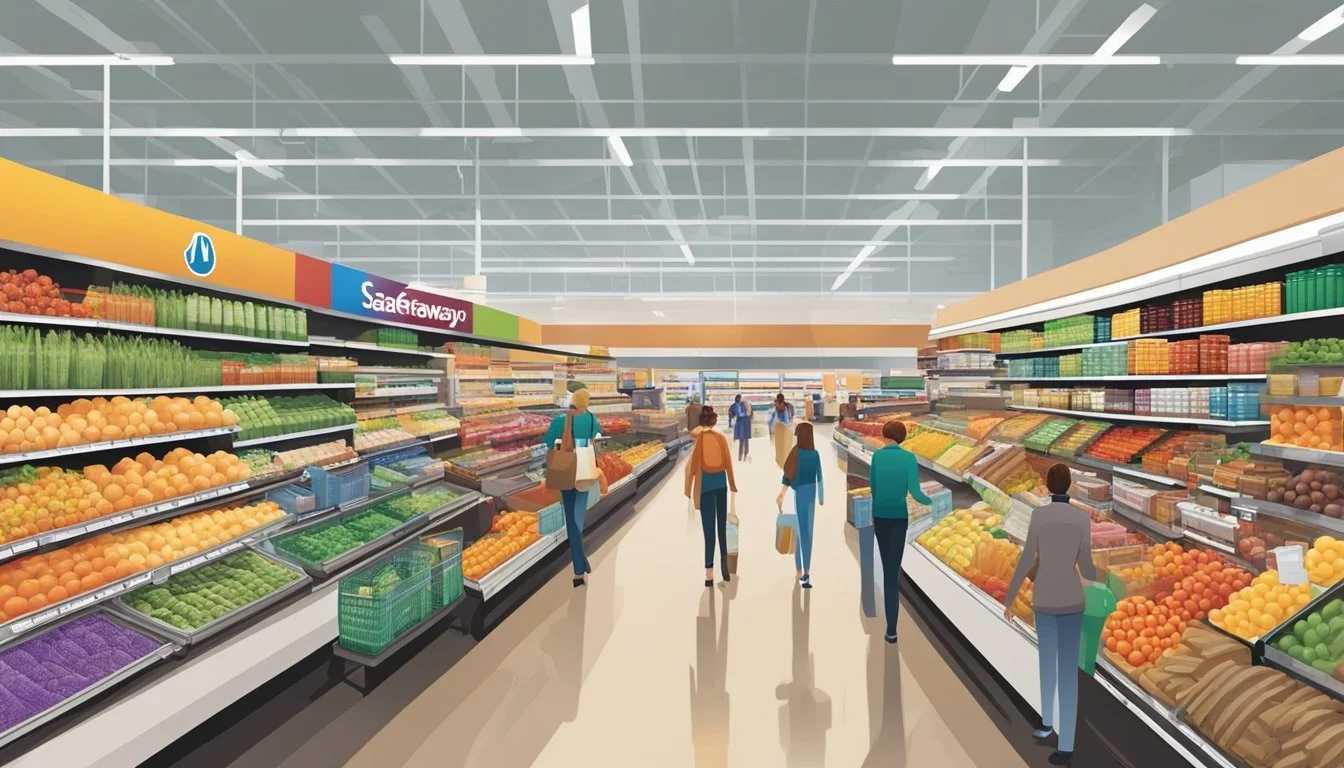Albertsons vs Safeway
Comparing Quality, Prices, and Shopper Experience
Part of Our Grocery Store Guide with Details on Albertsons and Safeway
When it comes to grocery shopping, the choice between Albertsons and Safeway is a common dilemma for consumers seeking value and quality. Both grocery stores have a significant presence in the United States, with a wide array of products ranging from fresh produce to household goods. The decision often boils down to which store offers better prices and a more satisfying shopping experience.
Recent comparisons suggest that Albertsons generally offers more competitive pricing than Safeway, potentially yielding savings for budget-conscious shoppers. With prices at Albertsons being slightly lower on a variety of common store brand items, consumers might find it the preferable option for reducing their grocery bills. However, the cheapest option can vary depending on the specific category of goods, with some exceptions like beverages where the price difference might be less pronounced or vary by region.
Consumers also weigh factors beyond price, such as the quality of fresh produce, customer service, and store cleanliness. These components of the shopping experience contribute to overall customer satisfaction and loyalty. Certain reports have indicated that both Albertsons and Safeway may have lower ratings for the quality of fresh produce when compared with other grocery chains, suggesting that customers may want to consider their priorities when choosing where to shop.
History and Background
The competitive landscape of grocery stores in the United States features two prominent names: Albertsons and Safeway. This section explores the distinct historical paths both companies have traversed, which have played significant roles in shaping the current grocery market.
Origins of Albertsons
Albertsons stands as a major player in the American grocery sector, with its inception dating back to 1939. Founded by Joe Albertson in Boise, Idaho, the store was originally a 10,000 square foot space, a considerable size for the era, indicating an ambitious beginning. Albertsons grew from this single store to a chain spread across the country, now known for being the second-largest supermarket chain in North America as of 2020.
Origins of Safeway
Safeway, Inc., traces its roots to 1915, setting a precedent as a supermarket chain that prioritized small, neighborhood groceries. It quickly distinguished itself in the industry by implementing produce pricing by weight, which was an innovative concept at the time. Safeway expanded its reach significantly over the years, and by 2015, it became a subsidiary of Albertsons following acquisition maneuvers led by private equity investors, including Cerberus Capital Management.
Store Presence and Expansion
The competition between Albertsons and Safeway is marked by substantial store presence and strategic expansion moves. This has implications for market dominance and consumer choices across various regions.
Albertsons Store Locations
Albertsons operates a significant number of supermarket locations. As of the latest information, it has a prominent presence similar to its competitors such as Kroger and Safeway. Albertsons supermarkets are a common sight across various states, establishing the brand as one of the substantial grocery store chains in the country.
Safeway Store Locations
Safeway, now under the same corporate umbrella as Albertsons, boasts a widespread network of supermarkets, particularly in Western states like California and Washington. Its stores are often found nestled among other major players like Walmart, Costco, and Trader Joe's, yet Safeway holds its ground with a strong local presence.
Mergers and Acquisitions
Both Albertsons and Safeway have seen their business strategies shaped by various mergers and acquisitions. One noted merger is that of Albertsons and Safeway itself, which combined their strengths in the market. Albertsons' expansion strategy often places the brand head-to-head with giants like Walmart and Kroger, while mergers continue to play a vital role in their competitive positioning in the diverse and evolving grocery store landscape.
Product Range and Quality
When comparing Albertsons and Safeway, it is essential to consider the diversity of their product offerings and the overall quality of their items, particularly in produce and store brands.
Variety of Brands
Albertsons and Safeway both provide a wide array of brands, ranging from well-known national labels to their own store brands. Albertsons is often noted for its cost-effective pricing on store brand items compared to national brands, indicating a broader selection for budget-conscious shoppers. In terms of store brands, Albertsons occasionally has sales and regular prices that make it a favorable option for customers looking to save money without compromising on variety.
Quality of Produce
The quality of produce is crucial for customers seeking fresh, high-quality fruits and vegetables. Both grocery stores source a range of fresh produce, including organic options, catering to the demand for healthier food choices. They emphasize the freshness of their produce sections, promoting items sourced from local farmers when possible. However, no specific data from the provided search results indicates a definitive leader between Albertsons and Safeway regarding the quality of produce, meat, and dairy. Customers often make their choices based on personal experience and regional differences in store stock.
Pricing and Value
When comparing Albertsons and Safeway, consumers prioritize finding the best prices and value for their grocery shopping. Both supermarkets offer a variety of products but differ in their pricing strategies and savings opportunities. A closer examination provides insight into which store may offer greater value for your money.
Price Comparison
Albertsons is frequently observed to have lower prices compared to Safeway. Analysis of a range of store brand items reveals that Albertsons has prices that are approximately 8% to 35% lower than those found at Safeway.
Item Category Albertsons Price Safeway Price Store Brand Items Up to 35% cheaper Higher prices
It's important to note, however, that prices can vary based on location and time, and periodic sales at Safeway may narrow this gap.
Store Brands and Generic Staples
For shoppers looking to save, store brand options are important. Both Albertsons and Safeway offer their own store brand products, which are typically seen as more affordable alternatives to national brands. Products like butter and milk – staples in many households – are generally priced competitively within these brands, contributing to overall savings.
Albertsons: Often the cheaper option for store brand items.
Safeway: May have higher regular prices but features store brands as well.
Promotions and Savings
Savings opportunities at Albertsons and Safeway go beyond everyday low prices through promotions and the use of loss leaders. Loss leaders refer to items sold at a loss to draw customers into the store, with the hope that they will make additional purchases at regular prices.
Albertsons and Safeway:
Offer sale prices that can result in significant savings.
Use loss leaders as part of their marketing strategies.
Provide promotions that can influence the final cost to the consumer, making price comparison on the day of shopping crucial.
Shoppers should take advantage of these promotions and be aware that the best value can depend on the specific items, brands, and current deals available.
Consumer Experience
When considering Albertsons and Safeway, shoppers often compare the range of services, customer satisfaction ratings, and grocery delivery options provided by each store to determine which offers a better consumer experience.
Services Offered
Albertsons and Safeway offer a variety of services aimed at enhancing the shopping experience. These services include in-store bakeries, delis, and pharmacies. Some locations may also feature a variety of specialty departments such as floral, seafood, and prepared foods, catering to family needs and busy consumers looking for convenience.
Customer Satisfaction
Customer satisfaction is a critical factor influencing consumer preference between Albertsons and Safeway. Surveys of shoppers in various areas have shown varying results, but many consumers appreciate Albertsons for its competitive pricing in comparison to Safeway. Factors affecting customer satisfaction often include store cleanliness, product availability, and staff helpfulness.
Grocery Delivery Options
In today's fast-paced world, grocery delivery options are increasingly important to families and individual shoppers. Both Albertsons and Safeway provide customers with the convenience of grocery delivery services. These services are tailored to meet the needs of their customers, offering timely and dependable delivery to make the shopping experience more efficient and less stressful.
Market Position and Competition
In assessing Albertsons and Safeway, it's essential to consider their standings in the grocery market space, how they fare against each other, and the competitive pressures from larger chains and regulatory bodies.
Comparative Analysis
Albertsons and Safeway are both prominent players in the grocery industry, with Albertsons operating its stores under various banners including its namesake, Safeway, Vons, and others. Safeway, now a subsidiary of Albertsons since the merger in 2015, operates under its flagship name. The two chains share similar market strategies, often offering a combination of grocery items, specialty departments, and pharmacy services to cater to a diverse consumer base.
Grocery Chain Market Shares
The grocery market is highly competitive and split among several big chains. Albertsons, following its merger with Safeway, holds a significant portion of the market. However, when examining market shares based on revenue, Walmart stands out as the industry leader, followed by other retailers like Kroger and Amazon, which owns Whole Foods. Warehouse clubs like Costco, alongside grocery-oriented retailers like Target, also play vital roles in the market dynamics.
Key Competitors
Walmart and Kroger are key competitors in the grocery store industry, each with substantial market influence. Walmart's expansive network of supercenters provides a steep competition to traditional supermarket chains due to its broad inventory and competitive pricing. Kroger, the second largest food retailer in the US after Walmart, offers stiff competition with its variety of banners such as Ralphs and Harris Teeter. The Federal Trade Commission (FTC) actively monitors these major players to maintain fair competition and prevent monopolistic trends. Other contenders include regional chains like Market Basket and Giant, which maintain loyal customer bases in their respective areas.
Sustainable Practices and Community Impact
Albertsons and Safeway have made concerted efforts in sustainability and local community support which reflect in their various initiatives and programs.
Environmental Initiatives
Albertsons has set significant environmental targets, aiming for a 47% carbon reduction from its operations by 2030, with a baseline year of 2019, and striving for net-zero emissions by 2040. They are actively working to eliminate food waste going to landfills with a goal to reach zero waste by 2030. Their commitment to sustainability also includes reducing unnecessary plastics and packaging.
Renewable Energy: Both brands have made strides in utilizing renewable energy resources.
Organic Produce: Efforts to provide organic choices have been integral, aligning with both brands' sustainable image.
Safeway, as part of the Albertsons Companies, shares these environmental commitments, and both have been recognized by the EPA, highlighting their dedication to green power and safer choices in products.
Local Community Support
Community Giving: Albertsons and Safeway have a history of contributing significantly to their local communities. In the Southwest Division, they donated over 10.7 million pounds of food last year, which is equivalent to more than 12.8 million meals.
Supporting Farmers: The brands place importance on sourcing from local farmers when possible, which supports the local economies and reduces transportation emissions.
By reducing carbon emissions and backing recycling programs, Albertsons Companies underscores its investment in sustainability, which also complements its support for food security in local neighborhoods. Safeway, under the same umbrella, contributes through similar channels, echoing the unified goal to foster vibrant communities and a healthier planet.
Conclusion
When comparing Albertsons and Safeway, several factors play a critical role in determining which grocery store might be a better choice for consumers.
Pricing: Data indicates that Albertsons tends to be more cost-effective than Safeway, with potential savings ranging from 8% to 35% on common store-brand items, excluding the beverage category.
Selection: Both stores offer a wide array of products, and having common ownership means there is often little difference in the variety of goods available.
Store Experience: The shopping experience may vary by location, but generally, both Albertsons and Safeway are known for maintaining clean and organized stores with friendly staff.
Mergers and Acquisitions: The business landscape for both chains has been dynamic, with Albertsons acquiring Safeway in 2014. The proposed Kroger and Albertsons merger will further change the supermarket industry but how this will impact the consumer experience remains to be seen.
Consumers are encouraged to consider their personal priorities, whether it's cost, convenience, product variety, or store experience, when choosing between Albertsons and Safeway. It is also advisable to watch how industry changes might affect pricing and service levels in the future.
In conclusion, the decision between shopping at Albertsons or Safeway can be influenced by personal preference and location, with Albertsons generally offering better pricing on several items. Consumers will benefit from considering their individual needs and budget when making this choice.








